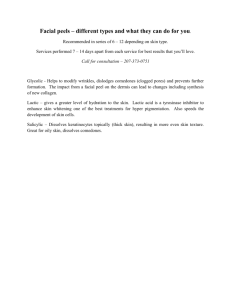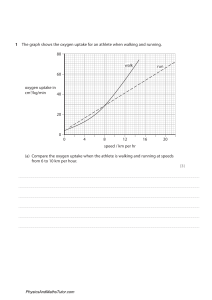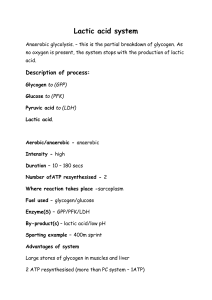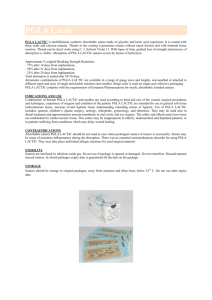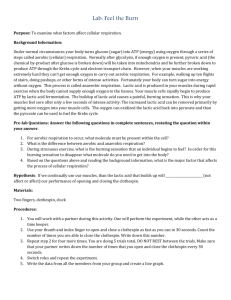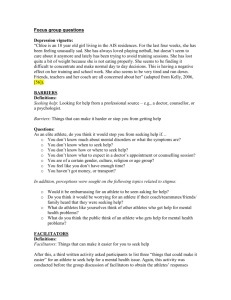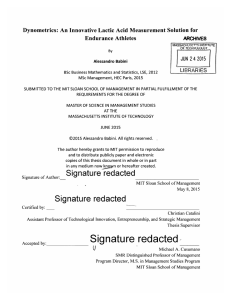Rachael Martin is an avid runner and athlete at a large university
advertisement
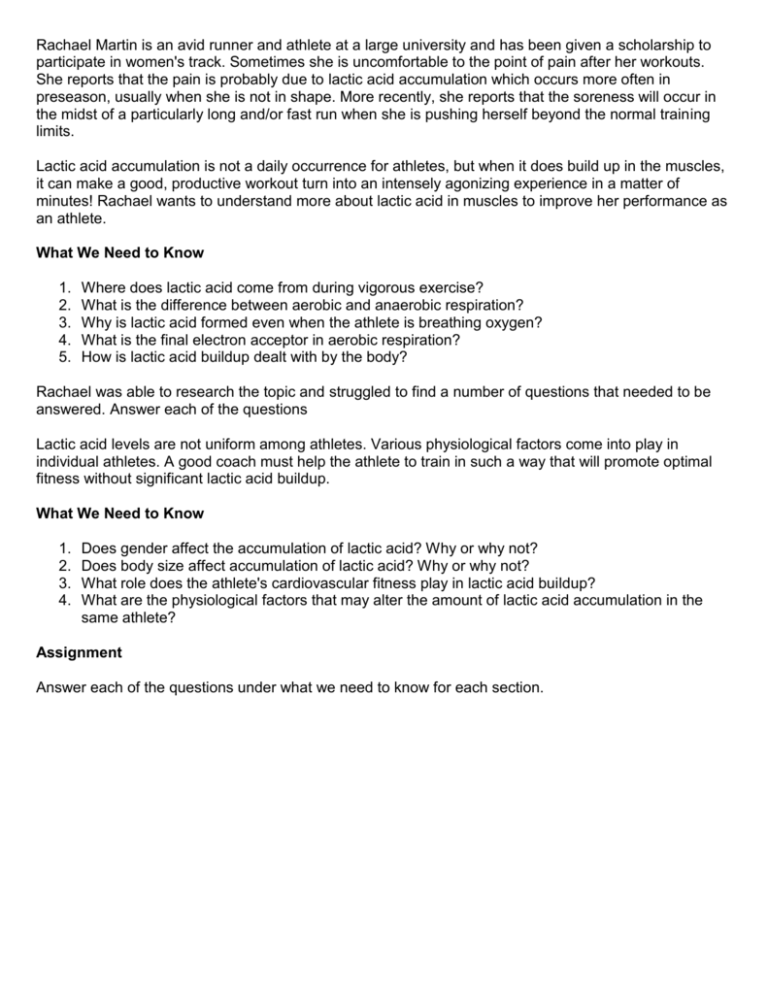
Rachael Martin is an avid runner and athlete at a large university and has been given a scholarship to participate in women's track. Sometimes she is uncomfortable to the point of pain after her workouts. She reports that the pain is probably due to lactic acid accumulation which occurs more often in preseason, usually when she is not in shape. More recently, she reports that the soreness will occur in the midst of a particularly long and/or fast run when she is pushing herself beyond the normal training limits. Lactic acid accumulation is not a daily occurrence for athletes, but when it does build up in the muscles, it can make a good, productive workout turn into an intensely agonizing experience in a matter of minutes! Rachael wants to understand more about lactic acid in muscles to improve her performance as an athlete. What We Need to Know 1. 2. 3. 4. 5. Where does lactic acid come from during vigorous exercise? What is the difference between aerobic and anaerobic respiration? Why is lactic acid formed even when the athlete is breathing oxygen? What is the final electron acceptor in aerobic respiration? How is lactic acid buildup dealt with by the body? Rachael was able to research the topic and struggled to find a number of questions that needed to be answered. Answer each of the questions Lactic acid levels are not uniform among athletes. Various physiological factors come into play in individual athletes. A good coach must help the athlete to train in such a way that will promote optimal fitness without significant lactic acid buildup. What We Need to Know 1. 2. 3. 4. Does gender affect the accumulation of lactic acid? Why or why not? Does body size affect accumulation of lactic acid? Why or why not? What role does the athlete's cardiovascular fitness play in lactic acid buildup? What are the physiological factors that may alter the amount of lactic acid accumulation in the same athlete? Assignment Answer each of the questions under what we need to know for each section. "I am really in a bind," reports 18-year-old Jeremy Post, American cycling representative in the 1998 Tour de France competition. "I have discovered that my roommate has been taking synthetic EPO in order to "dope" his blood with extra red blood cells." "Tomorrow starts the competition, and I have seen several other cyclers using the drug during training. I know the severe risks of taking the stimulant; and if I don't report him, he may die of a heart attack or stroke during the event!" What does Jeremy do? Does he break the so called "code of silence" among the athletes, or does he keep quiet about what he knows? What We Need to Know 1. 2. 3. 4. 5. 6. 7. 8. 9. What is "blood doping?" What are various ways it can be done? What is EPO or erythropoietin? Is it produced in the body naturally? Explain its role. What is the advantage of extra red blood cells to an athlete? If EPO is naturally occurring in the body, why would taking the synthetic form cause heart attacks or stroke? What is a "code of silence?" If you were Jeremy, would you report your information to officials? Why or why not? Are all athletes routinely tested for drugs? Should they be? Would universal testing save lives of athletes? The routine testing of athletes for drugs like EPO can be very costly. Who should bear the burden of paying for the testing on a universal level? Should the results of the 1998 Tour de France bicycling competition be thrown out in light of the recent evidence of drug use? Our patient was a 41-year-old Caucasian woman who presented to our Rheumatology clinic for evaluation of progressive exercise intolerance, fatigue, diffuse myalgias, arthralgias and difficulty sleeping. The pain primarily involved her entire back and arms, and she reported multiple tender points all over her body. On the basis of her symptoms, our patient had also been diagnosed with ______________________________, and was treated with multiple different medications without any relief. Her other medical history included hypothyroidism, cervical disc disease, hypertension and Raynaud's disease. Notable family history included breast carcinoma and hypertension in her mother, and lymphoma in her father. Her medications at presentation included lisinopril 5 mg daily and levothyroxine 25 μg daily. Other pertinent medications she had previously used included pregabalin, amitriptyline and gabapentin. Her physical examination results were normal except for mild tenderness to palpation along her upper and lower back, and shoulders. 1. What do you think the initial diagnosis was based on her symptoms? The first blank. 2. The first diagnosis was incorrect, the following are her test results. List 2 options for what the diagnosis could be after the 2nd round of testing. Significant laboratory results included creatine kinase (CK) = 325 U/L (normal range 0 to 150 U/L), normal comprehensive metabolic panel (CMP) and complete blood count (CBC), liver function tests and thyroid functions tests. A six-minute walk test revealed a normal resting lactic acid = 1.6 mmol/L, and an elevated post-six-minute-walk lactic acid = 5 mmol/L (normal result < 2 mmol/L). Her ammonia levels were normal at rest and after six-minute walk (14 μmol/L and 38 μmol/L respectively; normal 0 to 40 μmol/L). A muscle biopsy was performed for biochemical evaluation, which revealed several abnormalities including decreased levels of citric acid synthase (49% of normal), cytochrome c oxidase (53% of normal), succinate dehydrogenase (72% of normal), and nicotinamide adenine dinucleotide (NADH) dehydrogenase (73% of normal).

